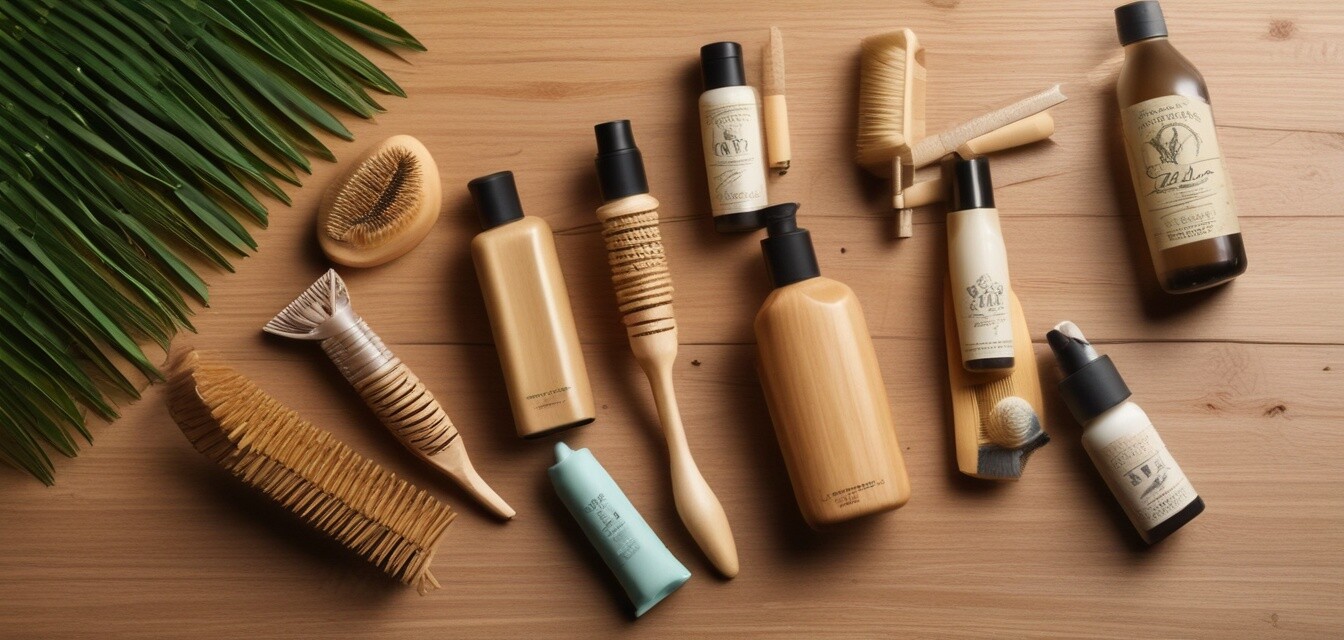
How to Transition to a Sustainable Haircare Routine
Key Takeaways
- Evaluate your current haircare products for sustainability.
- Look for eco-friendly brands that prioritize refillable, recyclable, or biodegradable packaging.
- Incorporate natural ingredients into your haircare regimen.
- Minimize water usage by adopting low-waste washing techniques.
- Consider the longevity and impact of the tools you use.
As we become increasingly aware of our environmental footprint, shifting to a sustainable haircare routine is more than just a trend—it's a responsibility. The beauty industry, particularly luxury brands, is now focusing on eco-friendly practices without compromising quality. This article will guide you through practical tips on making that transition smoothly and effectively, ensuring your routine supports your beauty goals while being kinder to our planet.
Evaluate your haircare products
The first step towards a sustainable routine is assessing what you currently have. Take a good look at your haircare products, considering the following:
- Ingredients: Are they natural or synthetic?
- Packaging: Is it recyclable or reusable?
- Brand practices: Does the brand showcase sustainability initiatives?
| Product Type | Eco-Friendly Version |
|---|---|
| Shampoo & Conditioner | Refillable options, solid shampoo bars |
| Hair Masks | Organic, cruelty-free formulas |
| Styling Products | Eco-friendly packaging, vegan options |
Seek Eco-Friendly Brands
The next step is to choose brands that align with eco-conscious values. Many luxury haircare brands are innovating their product lines to be more sustainable, focusing on:
- Refillable and recyclable packaging.
- Natural ingredient sourcing from sustainable resources.
- Transparency in production processes.
For example, brands like Eco-friendly luxury haircare accessories offer products that meet these criteria. Look for certifications such as cruelty-free and organic when researching brands.
Incorporate Natural Ingredients
Opting for products with natural ingredients not only benefits your hair but also reduces synthetic chemicals that may impact the environment. Consider these natural ingredients:
- Argan oil - known for its nourishing properties.
- Aloe vera - promotes hair health and hydration.
- Coconut oil - a versatile conditioner and protectant.
Minimize Water Usage
Water is a precious resource, and we can all do our part to conserve it. Here are a couple of practices to adopt:
- Try waterless haircare products such as dry shampoos.
- Limit shower time and consider using less water-intensive washing techniques.
Choosing Sustainable Tools
Hair tools can make a significant impact on sustainability. Here are some tips when choosing tools:
- Look for hairbrushes made from sustainable materials like bamboo.
- Invest in long-lasting styling tools to reduce waste.
- Utilize microfiber towels that cut down on drying time and energy use.
For an array of sustainable styling tools, check out our selection at High-end styling tools.
Education and Community Engagement
Educating yourself and engaging with communities that focus on sustainability can further enhance your transition. Connect with like-minded individuals and brands on social media to share tips, products, and eco-conscious practices. This approach not only enriches your knowledge but also helps build a community that values sustainability in haircare.
Conclusion
Transitioning to a sustainable haircare routine involves assessing the products you use, choosing eco-friendly brands, and being mindful of your water and tool usage. By prioritizing sustainability in your beauty routine, you contribute to a healthier planet while still enjoying the luxury of beautiful hair. Embrace this journey towards a greener lifestyle today, and revolutionize the way you care for your hair!
Pros
- Contributes to environmental sustainability.
- Supports ethical brands with good practices.
- Promotes healthier hair with natural ingredients.
Cons
- Some eco-friendly products may be more expensive.
- Not all brands have well-established sustainability practices.
Tips for Beginners
- Start small by replacing one product at a time.
- Research brands and read reviews focusing on sustainability.
- Attend workshops or webinars on sustainable beauty.

